Although it bore little similarity to our modem sport, powerboat racing can reliably trace its origins as far back as 1902 when the British formed their Marine Motoring Association.
By the following year, New York´s Columbia Yacht Club had formulated a constitution for what ultimately became the American Power Boat Association (APBA) and the French had formed their Congress of Automobile Boats. In 1903, the French ran a 62-mile circuit race on the Seine at Meulan and the 230-mile Paris to Trouville event, while the following year saw a race across the English Channel and an attempt to promote a Trans-Atlantic marathon. Gottlieb Daimler had been experimenting with single-cylinder internal combustion engines in Germany and America´s E.W. Graef developed what may well have been the first Deep-V powerboat in the same year that Britain´s newspaper magnate, Sir Alfred Harmsworth, created what has become the world´s oldest and arguably most famous powerboat racing trophy.
In 1907, a small group of motoring enthusiasts formed the Paris-based Internationale Motor Yacht Association and, after a change of name to the Association Internationale du Yachting Automobile in 1908, staged races regularly in Nice, Palermo, Monte Carlo, Algiers, Toulon and Arcachon until the outbreak of the First World War. Led by the Duke of Westminster, Lord Montagu, Baron Henri de Rothschild, Noel Robbins and others racing prospered in Europe and by 1911 the Americans had stepped in on the act by staging a race from Long Beach to Catalina Island in California.
| 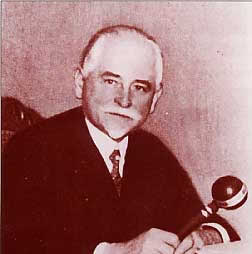 Following the persuasive overtures of Dr Morton Smart and John Ward who had formed the Union Internationale du Yachting Automobile, Alfred Pierrard became its first President in 1922. Following the persuasive overtures of Dr Morton Smart and John Ward who had formed the Union Internationale du Yachting Automobile, Alfred Pierrard became its first President in 1922.
Photo: UIM Archive |
Competing mostly in boats with vertical stem and flat bottoms which relied more on brute force and ignorance than hydrodynamic efficiency, the rich and famous took their pleasures on the water quite seriously, in an amateur sort of way.
The involvement of Sir Thomas Sopwith in England and Jack Manson and Gar Wood on the American scene brought a more professional edge to this emerging competition and the Harmsworth Trophy and Gold Cup competitions sparked the public imagination in much the same way as the Schneider Trophy international air races and the latter day Hales Trophy for the Trans-Atlantic Blue Riband. By 1917, the Americans were running ten races a year in locations from Miami to Key West, Palm Beach, Havana and New York but the vagaries and traumas of changing presidents and offices almost annually with its attendant inefficiency led to the collapse of the European AIYA in 1918, when the last known President, a Dr Busley from Berlin, disappeared and took the records of the Association with him into obscurity. It was 1922 - and largely due to the lobbying efforts of an Scott, Dr Morton Smart and John Ward, an expatriate Irishman living in Belgium - that saw the formation in Brussels of the precursor of today´s modern administration in the new Union Internationale du Yachting Automobile with Ward as its first Secretary General and the Belgian businessman Alfred Pierrard its first President.
Having been successful in re-establishing the international authority, Ward was succeeded as Secretary General in 1925 by Maurice Pauwaert who, together with the President, administered the emergent sport unchallenged for 20 years until the outbreak of the Second World War.
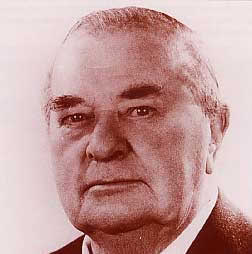
|
Already re-named the Union Internationale Motonautique in 1927, the organisation emerged unscathed from the war and was subsequently headed up by Freddy Buysse through its most formative twenty-six years.
Photo: UIM Archive |
By 1927 it had acquired a permanent administrative base, had promulgated its first sporting rules, published its first racing calendar and after a further change of name to the now familiar Union Internationale Motonautique (UIM) was ready to welcome more nations into its fold. Among that first intake were Argentina, Belgium, France, Germany, the United Kingdom, Holland, Ireland, Monaco, Norway, Poland, Sweden and finally the United States of America, as the world basked in what was to be only a temporary peace.
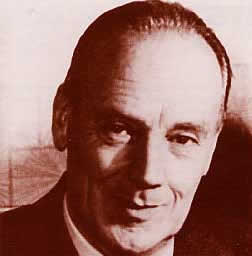 |
Italy´s Vittore Catella held Presidential office between 1972-1975 when the UIM was based in Ostend.
Photo: UIM Archive |
Inevitably the Second World War brought an end to all marine sporting endeavours, though it was coincidentally responsible for much of the technical development which gave the modern sport its direction, particularly in the areas of hull and engine design. However, in 1946, the UIM emerged unscathed from the hostilities to meet a world of change. With its administrative base relocated from Brussels to Ghent, Freddy Buysse elected to the President´s chair and first with Maurice Pauwaert and latterly with Henri Thomas as Secretary General, the UIM powered through its most formative decades and towards a body which is recognisable today.
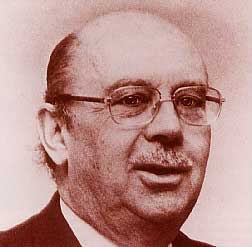 |
Claude Bouilloux Lafont came from the French federation to head the UIM from 1975-1978 in Brussels.
Photo: UIM Archive |
The formation of a Technical Committee and the sanctioning of the American Power Boat Association to represent the nation with the biggest potential for competitive growth began a progressive programme of sporting, technical administration and safety development which continues to this day.
Overseeing this have been successive Presidents from Italy (Vittore Catella), France, (Claude Bouilloux Lafont), Italy again (Francesco Cosentino), Belgium (Paul Lamberts) Germany (Ralf Frohling), the USA (Charles Strang) and once more Italy in the shape of current President Dr Raffaele Chiulli, who was elected to office in 2007.
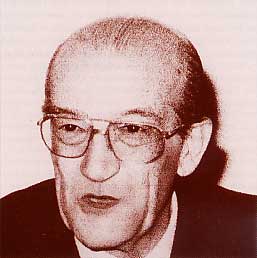 | | 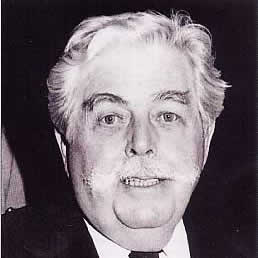 |
Deputy Speaker of the Italian House of Representatives, a Director of both Alitalia and CIGA Hotels and a Class I driver of international repute, Francesco Cosentino held the Presidency from 1978- 1985.
Photo: UIM Archive |  | Paul Lamberts filled the Union´s top position between 1985-1987.
Photo: UIM Archive |
Thomas retired as Secretary General in 1972 to be succeeded by the urbane Belgian, José Mawet, under whose guidance the administrative office moved from Brussels to the Principality of Monaco. In late 1992 Régine Vandekerckhove became only the fifth person to hold this office before being followed by Andrea Dini of Italy and the present incumbent, the highly experienced Swiss Thomas Kurth.
As for the sport’s administration today, the hub of the Union – the clearing house for all contacts with and from its member nations (a total now risen from twelve in 1927 to 60 in 2017) and distribution centre for all relevant documentation - is its registered office within Monaco´s Stade Louis II sporting complex in Font Vieille. This small suite of offices is staffed by the UIM´s permanent full-time Secretary General and five administrative assistants.Every other office, function and activity within this international governing body is contributed on a voluntary basis by the individuals concerned and for the most part, expenses by the national authorities from which these individuals come, though some choose to fund their own activities to the wider benefit of all.
The ultimate authority in the sport is vested in the UIM´s General Assembly which is made up of one delegate from each sanctioned national authority and which meets annually in the autumn of the year to ratify the minutes of the previous year´s Annual General Meeting and examine the reports of the General Secretary and Treasurer.
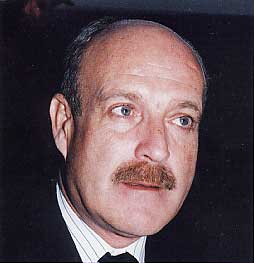 |
Ralf Frohling, was an accomplished hydroplane driver and held office from 1987 to 2006, guiding the UIM forward through the uncharted waters of professionalism and geographical expansion.
Photo: EyeSea |
Responsible to the General Assembly for the management of the UIM is the Executive Committee, made up currently of the President and a minimum of five members, which meets as often as necessary to ensure the smooth running of the Union. In practice however, as many as 12 Administrators, Commission Heads and other officers are seconded to the Committee. It is this body which appoints the permanent Secretary General, a non-voting, ex officio member of all Committees and Commissions who heads up the Union´s administrative and personnel department.
If the General Assembly is the supreme authority and the Executive Committee is the power base of the UIM, it is the Commissions which make the sport work. It is the elected representatives of these Commissions from Offshore (COMINOFF), Medical and Safety (COMINSAFE), Sports (COMINSPORT), Formula, Technical (COMINTECH), Aquabike and Pleasure Navigation who formulate, regulate and police the rules of competition. At any one time, it is possible to have more than 100 enthusiastic individuals voluntarily giving their time to the task of making powerboat racing sport safer and more effective.
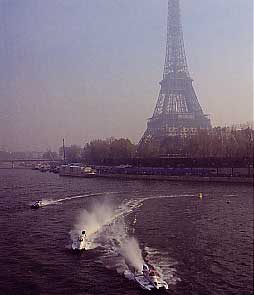 |
The spirit of powerboat racing in the sixties and seventies was most obvious annually on the first weekend in October as the best circuit drivers in the world battled through the 6 Heures de Paris. An occasion where social, gastronomic and competitive elements came happily together
Photo: Jean Marc Bougain |
It is within the last three decades that the UIM has grown most and part of the onus for this must fall on the proliferation of racing driven jointly by the Union and its various independent promoters. Most notably this has seen racing extend its horizons to encompass China, Cuba, Abu Dhabi, Dubai, Brazil, Greece, Hungary, Qatar, Kuwait, Malaysia, Malta, Russia, South Africa, Switzerland, Thailand and Ukraine with a growth that is likely to continue.
In the face of geographical growth, financial pressure and the quest for media exposure, the UIM has the taxing task of presiding over a sport whose roots are firmly bedded in amateurism but which by its very nature is being progressively enveloped by professionalism at all levels. As it sets out for the next millennium and its own centenary the UIM is committed to protect its past but equally to develop its future, improving the efficiency of its operation and of communicating to a wider audience the many and varied ways in which powerboat racing and its participants benefit from the efforts of a lively and more commercially aware international governing body.
| PRESIDENTS OF THE U.I.M. |
| 1922-1944 | Alfred Pierrard | Belgium |
| 1946-1972 | Freddy Buysse | Belgium |
| 1972-1975 | Vittore Catella | Italy |
| 1975-1978 | Claude Bouilloux Lafont | France |
| 1978-1985 | Francesco Cosentino | Italy |
| 1985-1987 | Paul Lamberts | Belgium |
| 1987-2006 | Ralf Frohling | Germany |
| 2007 | Charles D.Strang | U.S.A. |
| Since 2007 | Raffaele Chiulli | Italy |
| SECRETARIES GENERAL OF THE U.I.M. |
| 1922-1925 | John Ward | Ireland |
| 1925-1965 | Maurice Pauwaert | Belgium |
| 1965-1972 | Henri Thomas | Belgium |
| 1973-1992 | José Mawet | Belgium |
| 1992-2011 | Régine Vandekerckhove | Belgium |
2011-2014
| Andrea Dini | Italy |
| Since 2014 | Thomas Kurth | Switzerland |